KSEEB SSLC Class 10 Maths Solutions Chapter 8 Real Numbers Ex 8.4 are part of KSEEB SSLC Class 10 Maths Solutions. Here we have given Karnataka SSLC Class 10 Maths Solutions Chapter 8 Real Numbers Exercise 8.4.
Karnataka SSLC Class 10 Maths Solutions Chapter 8 Real Numbers Exercise 8.4
Question 1.
Without actually performing the long division, state whether the following rational numbers will have a terminating decimal expansion or a non-terminating repeating decimal expansion :
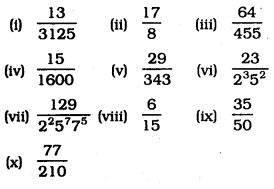
Solution:
(i)
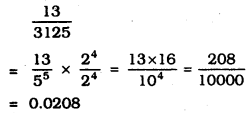
∴ This is terminating decimal expansion.
(ii)

∴ This is terminating decimal expansion.
(iii)
\(\frac{64}{455}=\frac{2^{6}}{5 \times 7 \times 13}\)
∴ This is non-terminating repeating expansion.
(iv)
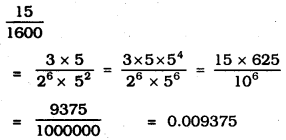
∴ This is terminating decimal expansion.
(v)
\(\frac{29}{343}=\frac{29}{7^{3}}\)
∴ This is non-terminating repeating expansion.
(vi)
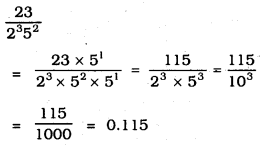
∴ This is terminating decimal expansion.
(vii)
\(\frac{129}{2^{2} 5^{7} 7^{5}}\)
∴ This is non-terminating repeating expansion.
(viii)
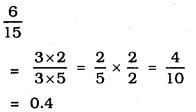
∴ This is terminating decimal expansion.
(ix)
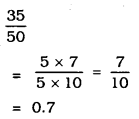
∴ This is terminating decimal expansion.
(x)

∴ This is non-terminating repeating expansion.
Question 2.
Write down the decimal expansions of those rational numbers in Question 1 above which have terminating decimal expansions.
Solution:

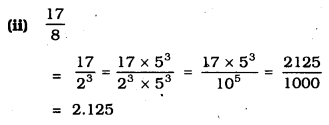
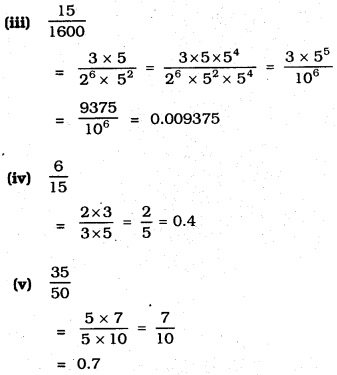
Question 3.
The following real numbers have decimal expansions as given below. In each case, decide whether they are rational or not. If they are rational, and of the form \(\frac{p}{q}\), what can you say about the prime factors of q?
(i) 43.123456789
(ii) 0.120120012000120000………..
(iii) \(43 . \overline{123456789}\)
Solution:
(i) 43.123456789
\(\frac{p}{q}\) is a rational number
Prime factor of q:
q = 109 = 29 × 59
(ii) 0.120120012000120000…………
This is an irrational number
(iii) \(43 . \overline{123456789}\)
This is a rational number.
Because, Prime factors of ‘q’ are contrinued in non-terminating decimal expansion.
We hope the given KSEEB SSLC Class 10 Maths Solutions Chapter 8 Real Numbers Ex 8.4 will help you. If you have any query regarding Karnataka SSLC Class 10 Maths Solutions Chapter 8 Real Numbers Exercise 8.4, drop a comment below and we will get back to you at the earliest.